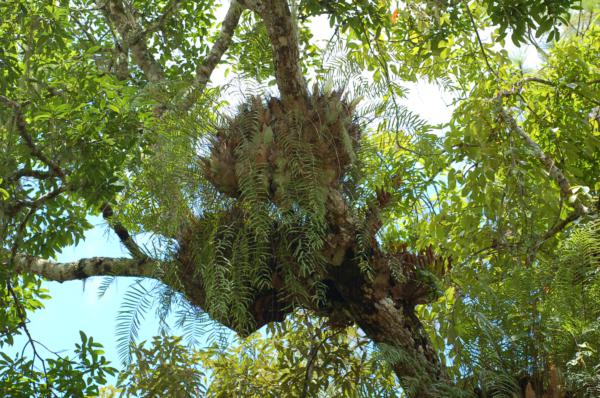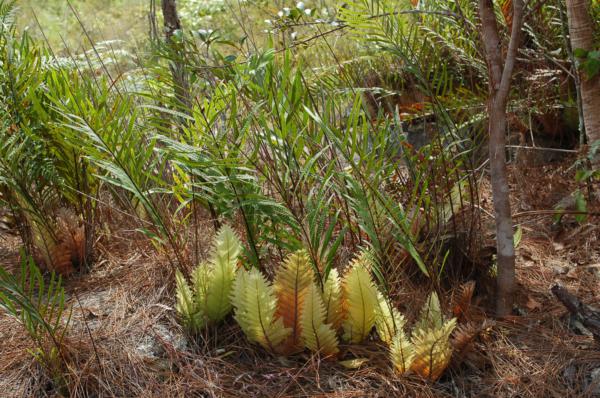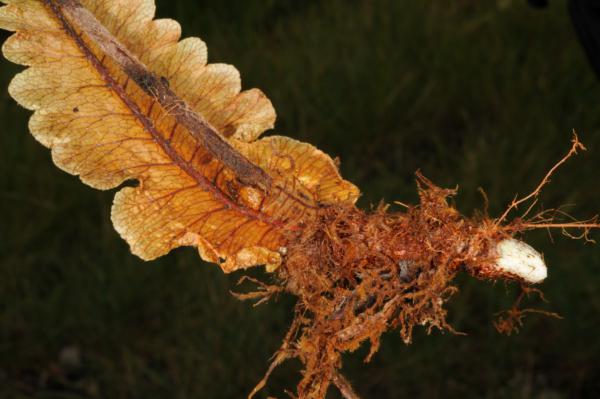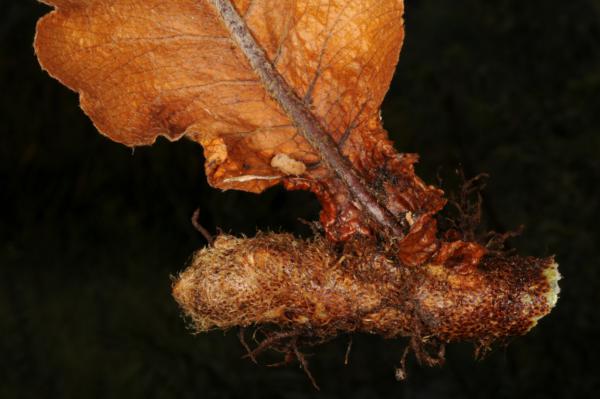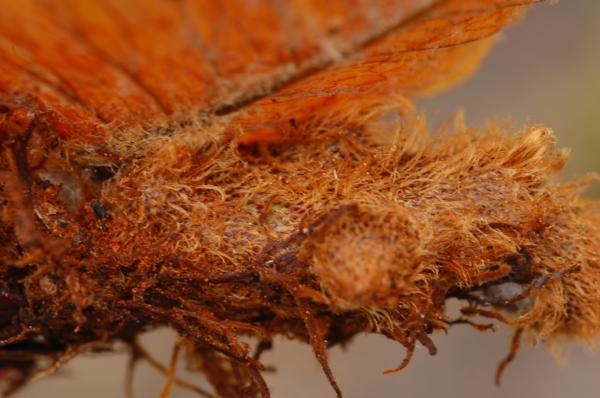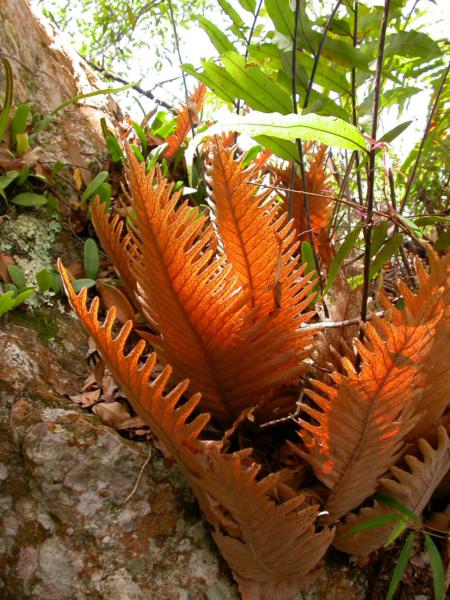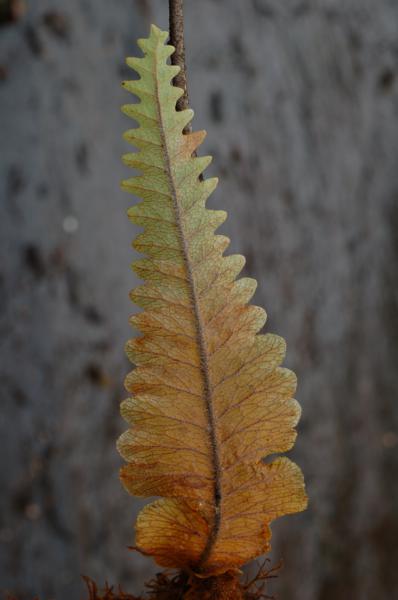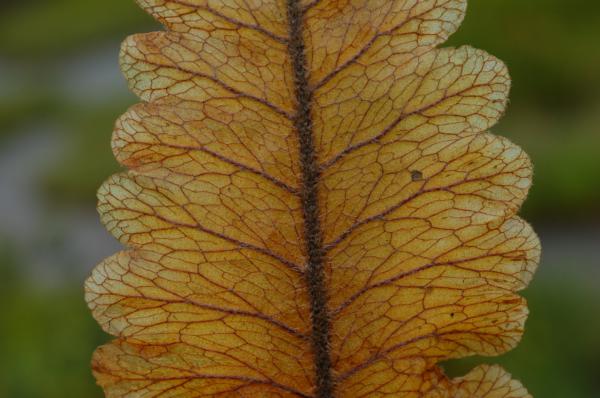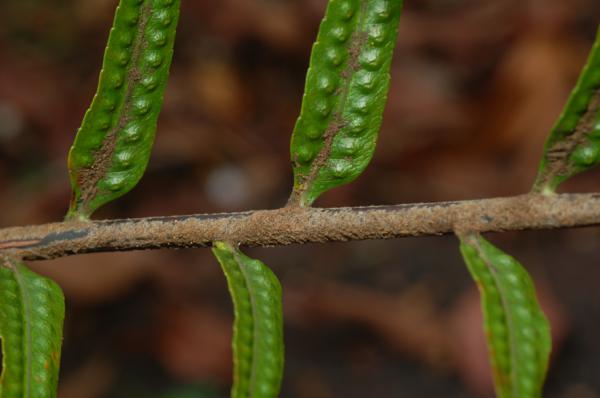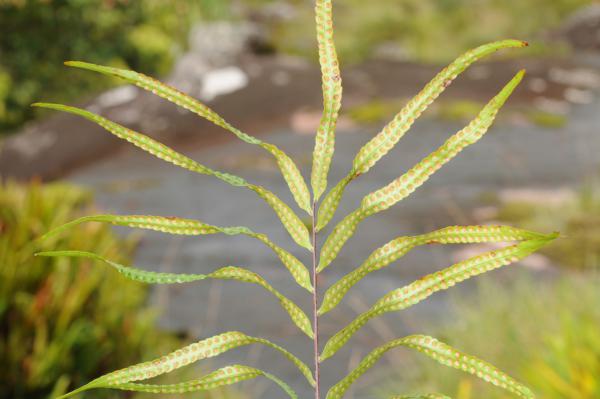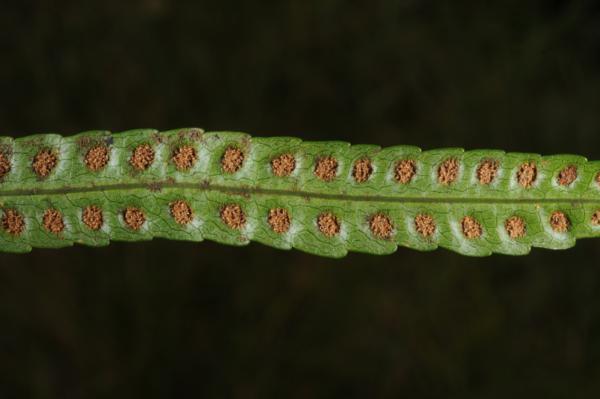
Drynaria rigidula (Sw.) Bedd.
Family
Polypodiaceae
Nomenclature
Drynaria rigidula (Sw.) Bedd., Ferns Brit. India: t. 314. 1869; Handb. Ferns Brit. India: 344, f. 192. 1883; Tardieu & C.Chr., Fl. Indo-Chine 7(2): 521. 1941; Holttum, Rev. Fl. Malaya ed. 1, 2: 183, f. 90. 1955 [‘1954’]; Holttum, Dansk Bot. Ark. 20: 20. 1961; Holttum, Dansk Bot. Ark 23: 231. 1965; Tagawa, J. Jap. Bot. 38: 330. 1963; Tagawa & K.Iwats., SouthE. Asian Stud. 5: 59. 1967; Tagawa & K.Iwats., Fl. Thailand 3: 550. 1989; Hovenkamp & Roos, Fl. Males., Ser. II, Ferns and Fern Allies 3: 42. 1998; Boonkerd & Pollawatn, Pterid. Thailand: 250, 270. 2000; Newman et al., Checkl. Vasc. Pl. Lao PDR: 30. 2007. – Polypodium rigidulum Sw., Schrad. J. Bot. 1800(2): 26. 1801. – Type: Thunberg (S), Java.
Description
Rhizome short creeping, 6–20(–30) mm diam., densely scaly throughout; scales gradually narrowing from peltate rounded base to apex, pale brown with dark basal point, 5–10(–13) by 0.5–1.2(–1.5) mm, sparsely hairy at margin with pale long downy hairs. Nest-leaves sessile, narrowly oblong-subdeltoid, round at base, acute at apex, 10–35 by 5–10(–15) cm, lobed 1/3–4/5 way towards midribs; lobes subtriangular, round at apex, entire, up to 3 by 2 cm. Foliage-leaves: stipes pale castaneous to purple, more or less densely downy hairy, up to 20(–40) cm long, but usually very short, often bearing undeveloped pinnae at both sides of stipes; laminae pinnate, oblong-lanceolate, 25–100(–200) by 12–30(–50) cm; rachis pale purple, downy-hairy; lateral pinnae about 40 pairs, linear-lanceolate, 8–15(–25) by 0.5–1.4(–3) cm, sessile, subentire or serrate at margin, caudately acuminate at apex, unequally cuneate at base; costa pale stramineous, jointed to rachis; veins raised on both surfaces, anastomosing, 2 to 5 areoles between main veins. Sori round, close to costa, one row along each side of costa , one between main veins, raised on upper surface.
Distribution in Thailand
NORTHERN: Chiang Mai, Chiang Rai, Tak, Phitsanulok; NORTH-EASTERN: Loei; SOUTH-WESTERN: Kanchanaburi; CENTRAL: Nakhon Nayok; SOUTH-EASTERN: Chanthaburi; PENINSULAR: Surat Thani, Krabi, Yala.
Distribution in Laos
Luang Phrabang, Xieng Khouang.
Distribution in Cambodia
Kampot, Kompong Speu, Kompong Thom, Mondulkiri, Pursat.
Wider Distribution
Indochina, Burma, Malesia, Polynesia and tropical Australia.
Ecology
On tree tunks or in muddy crevices of cliffs in some open places or in deciduous or mixed forests at medium altitudes, rather common throughout the country.
Proposed IUCN Conservation Assessment
Least Concern (LC). This species is common and widespread and not under any known threat.
Voucher specimens - Thailand
Middleton et al. 5060, Phitsanulok, Phu Hin Rong Kla National Park (E).
Voucher specimens - Cambodia
Middleton & Monyrak 608, Kampot, Bokor National Park (A, P); Bouillod 26, Kampot, Mt Kamchay (P); Martin 772, Kompong Speu, Kirirom (P); Long et al. CL421, Mondulkiri (P); Pierre 5723, Kompong Thom, Sral Mts (P); Godefroy-Lebeuf 531, Pursat (P).
Habit
Rhizome
Rhizome and base of nest leaf
Scales
Nest leaves
Nest leaf
Nest leaf venation
Rachis and pinnae bases
Upper part of fertile frond
Upper frond surface
Sori
Site hosted by the Royal Botanic Garden Edinburgh. Content managed by Stuart Lindsay, Gardens by the Bay, Singapore and David Middleton, Singapore Botanic Gardens. Last updated 24 January 2012
